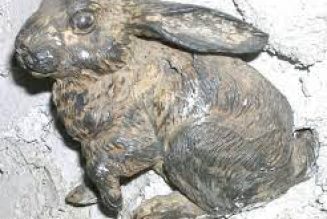Large stone structures and groups of standing stones erected in places around the world and believed to have religious or sacred significance or be associated with pagan rites.
The term megaliths means “great stones” and is derived from the Greek megas (“great”) and lithos (“stone”). Megaliths include any structure made up of large stones, but the term generally refers to those tombs and circular standing structures built in certain parts of North and South America, Asia, Africa, Australia, and Europe.
Who built these structures, how they were built, and for what purposes are questions that have few certain answers.
The most widely accepted view is that they were built by Neolithic and early Bronze Age peoples who usedthem for religious purposes and burial sites and as astronomical observatories for the Sun and other celestial bodies.
Special powers have been attributed to megaliths. Classifications. Megaliths fall into two broad classifications: dolmens and menhirs.
Dolmens
Also called chambered tombs, usually contained one or more stone-built chambers or rooms where the dead were laid out. Some
tombs were long while others were passage-graves, or round tombs with stone passages leading to one or more central rooms. Long tombs are common in parts of Wales, Scotland and England. Passage-graves are most commonlyfound in Ireland and western parts of Britain. Some tombs are covered with earth, forming mounds or tumuli. Dolmens apparently served as either tombs of collective graves, in which some remains have been found, or as temples for the dead, in which no human remains have been found.
The uncovering of bone shards at some siteshas led to the theory that sacrificial rites, even cannibalism, might have taken place. Scholars hold that prehistoric man probably believed that the body’s spirit lived in the head; therefore, breaking the head might have been an attempt to free the spirits of the dead. Some investigators believe that the tombs were more than burial sites and were used for religious, social and community gatherings as well.
Menhirs
Menhirs consist of single standing stones and groups of standing stones, sometimes arranged in circles, called cromlechs and henges. The menhirs at Avebury, England, form long avenues. Henges are circular arrangements distinguished by a bank or ditch surrounding them, and
have one or more entrances. The most famous henge is Stonehenge in Wiltshire, England.
The greatest and oldest of all megalithic remains are the 3,000 menhirs and dolmens at Carnac, Brittany,France. It is believed that the stones originally numbered at least 11,000. One dolmen, covered by a tumulus, hasbeen dated at 4700 b.c.e. The largest single stone is the 350-ton Fairy Stone, originally 20 feet high but now lying in pieces on its side at the end of a Neolithic burial site. It may have been felled by lightning or an earthquake.
Astronomical calculations show the Carnac megaliths may have been designed for astronomical observations.
Supernatural powers of megaliths. Standing stones were believed to have the power to heal or hurt. Holed stones required that the ill person climb through the hole to be restored to health. Women hugged stones to stimulate fertility or make a wish come true. The famous Men-anTol group of standing stones in Cornwall, England, includes a five-foot-high holed stone that has been reputed for centuries to have healing properties. The stone is nicknamed “The Devil’s Eye” and stands between two phallic-shaped boulders. In earlier times, sick children
were passed through the hole nine times against the Sun to cure them of their illnesses. Women desiring children passed themselves through the hole, as did the sick who wished to be cured.
Fairies were said to inhabit some stones and people left gifts to curry favor with them. Many large, solitary black menhirs have Devil legends associated with them. stones reputed to have supernatural forces are associated with witches, who were said to practice the occult arts as they gathered around them. In the 1596 trial of the Aberdeen witches of Scotland, the accused confessed to dancing around a gray stone at the foot of Craigleauch hill. The Hoar Stones in Britain’s Pendle Forest were said to be the gathering site of the Lancashire witches in the
17th century. Another such site is the Bambury Stone of Bredon Hill. The Rollright Stones of the Cotswolds, England, continued to be used as a nocturnal meeting place of witches into modern times.
Other stones were thought to have Earth forces emanating from them. Some psychics fear being near stones after dark because their strange powers disturb them.
Psychic researchers have felt sensations like electric shocks when placing their hands on them, powerful enough to knock them over. Others report feeling tingling and giddiness. Photographs show light radiations emanating from the stones. In dowsing, these forces indicate
the source of hidden underground water.
Some stones were believed to move in search of water and even dance. Legends are associated with some stones that brought harm to people who had uprooted them, and the stones themselves are said to be the petrified remains of people who were punished for dancing or playing on the Sabbath
